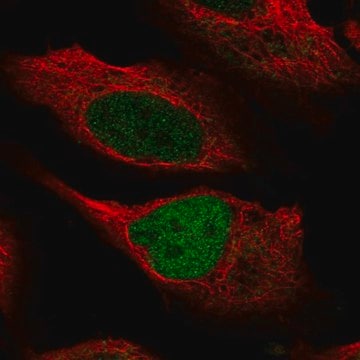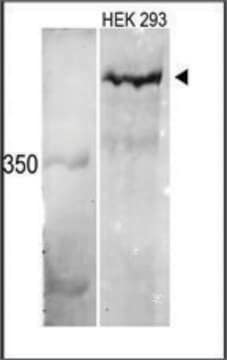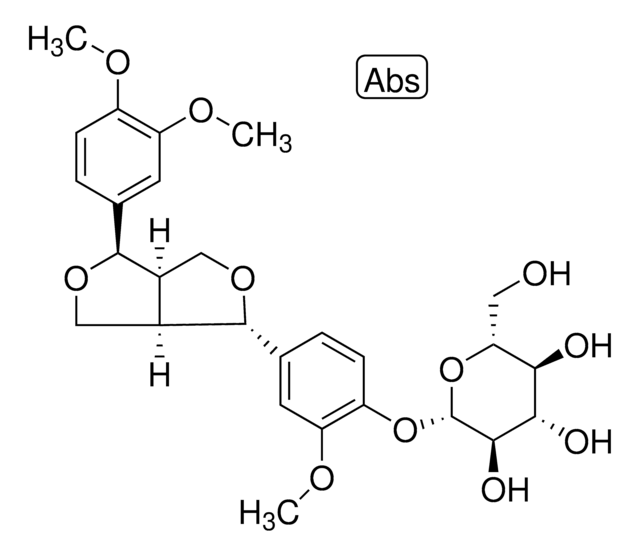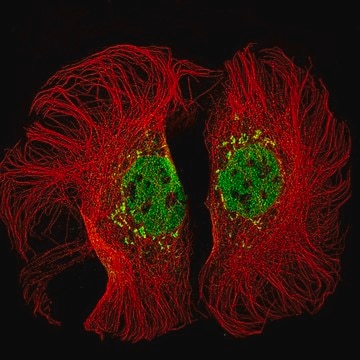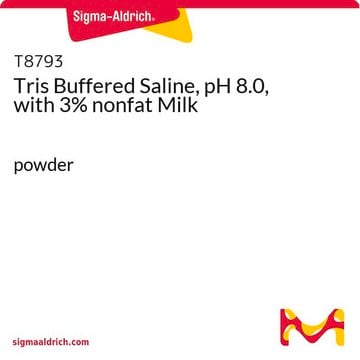ABE1851
Anti-MLL-3
from rabbit
Sinónimos:
HALR, Histone-lysine N-methyltransferase 2C, EC: 2.1.1.43, Lysine-N-methyltransferase 2C, Myeloid-lineage leukemia protein 3 homolog
About This Item
Productos recomendados
biological source
rabbit
Quality Level
antibody form
affinity isolated antibody
antibody product type
primary antibodies
clone
polyclonal
species reactivity
rat, human, mouse
packaging
antibody small pack of 25 μg
technique(s)
ChIP: suitable
immunohistochemistry: suitable (paraffin)
western blot: suitable
isotype
IgG
NCBI accession no.
UniProt accession no.
shipped in
ambient
target post-translational modification
unmodified
Gene Information
human ... KMT2C(58508)
mouse ... Kmt2C(231051)
General description
Specificity
Immunogen
Application
Chromatin Immunoprecipitation Analysis: A representative lot detected MLL-3 in MEF cells (Lee, J., et. al. (2009) Proc Natl Acad Sci USA. 106(21):8513-8).
Western Blotting Analysis: A representative lot detected MLL-3 in Western Blotting applications (Lee, J., et. al. (2009) Proc Natl Acad Sci USA. 106(21):8513-8); Bres, V., et. al. (2009). Mol Cell. 36(1):75-87).
Immunohistochemistry Analysis: A representative lot detected MLL-3 in mouse urothelial tumors (Lee, J., et. al. (2009) Proc Natl Acad Sci USA. 106(21):8513-8).
Epigenetics & Nuclear Function
Quality
Western Blotting Analysis: 1 µg/mL of this antibody detected MLL-3 in 10 µg of U2OS cell nuclear extract.
Target description
Physical form
Storage and Stability
Other Notes
Disclaimer
Not finding the right product?
Try our Herramienta de selección de productos.
Storage Class
12 - Non Combustible Liquids
wgk_germany
WGK 1
flash_point_f
Not applicable
flash_point_c
Not applicable
Certificados de análisis (COA)
Busque Certificados de análisis (COA) introduciendo el número de lote del producto. Los números de lote se encuentran en la etiqueta del producto después de las palabras «Lot» o «Batch»
¿Ya tiene este producto?
Encuentre la documentación para los productos que ha comprado recientemente en la Biblioteca de documentos.
Nuestro equipo de científicos tiene experiencia en todas las áreas de investigación: Ciencias de la vida, Ciencia de los materiales, Síntesis química, Cromatografía, Analítica y muchas otras.
Póngase en contacto con el Servicio técnico